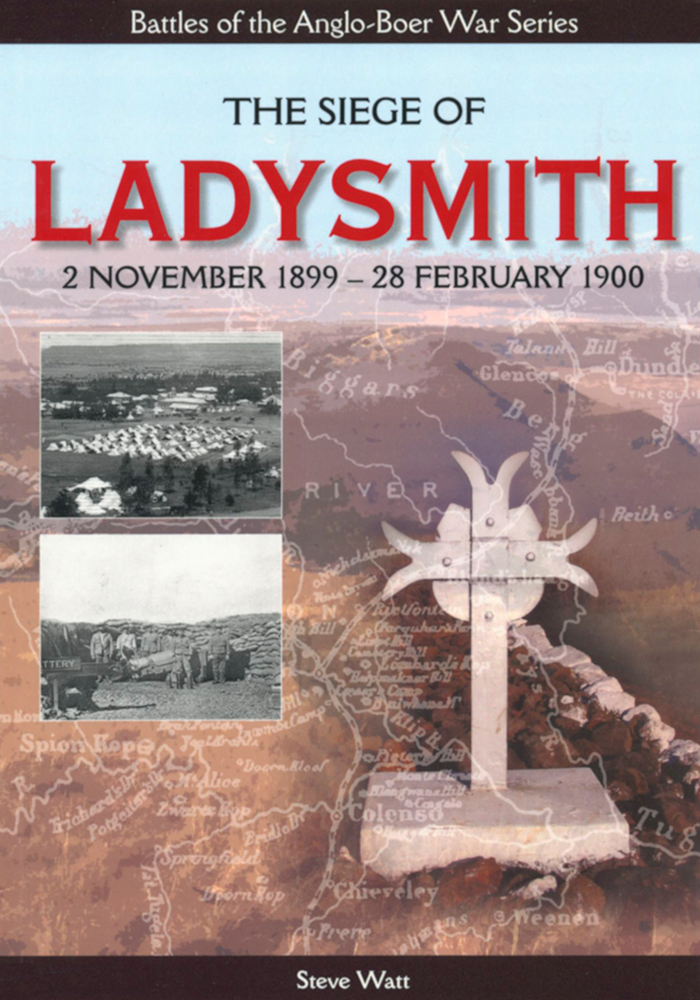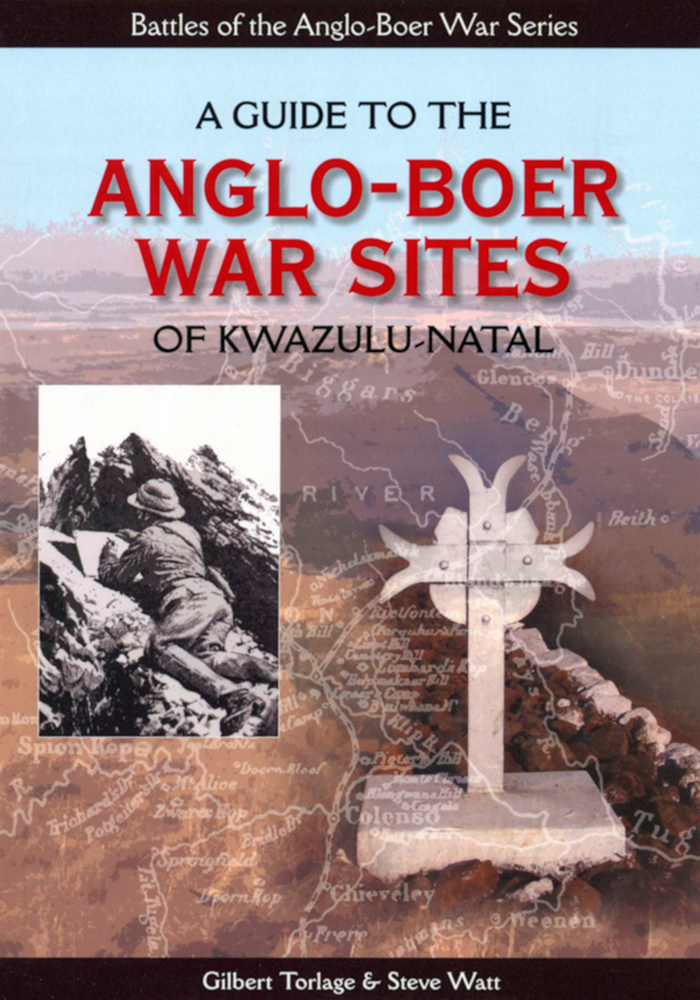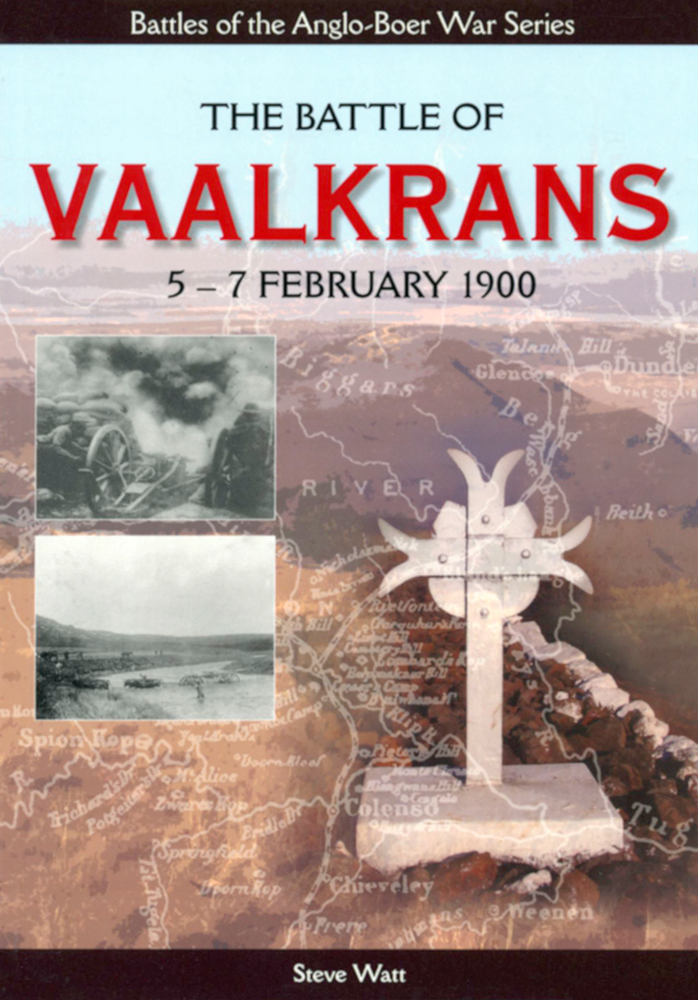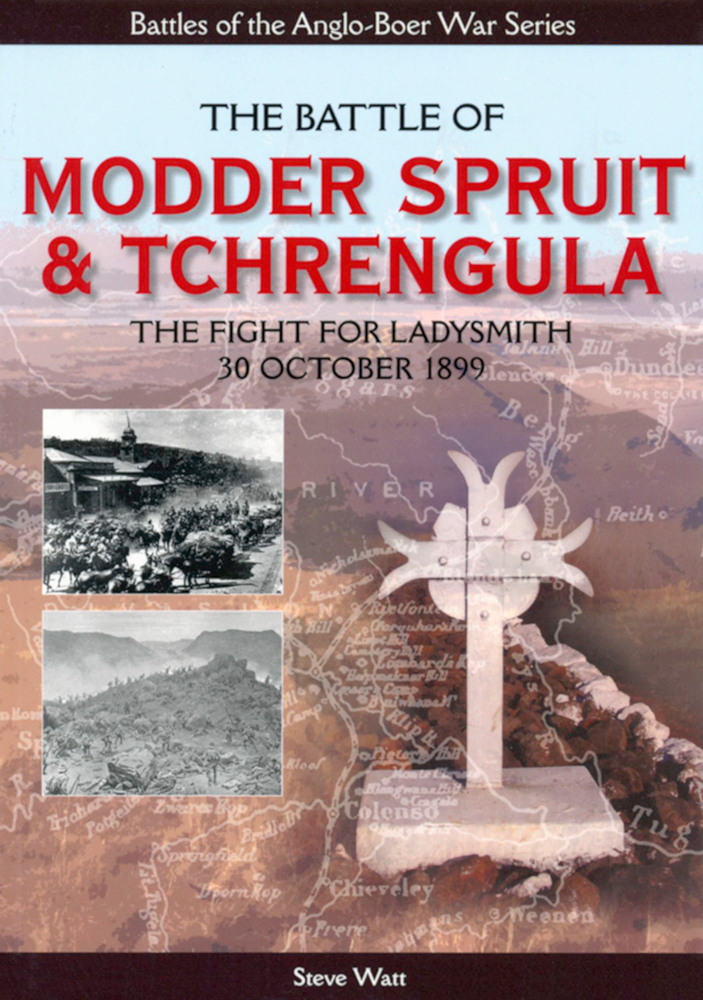The Battle of Modder Spruit and Tchrengula 30 October 1899, by Steve Watt
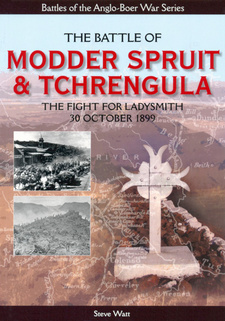
The Battle of Modder Spruit and Tchrengula 30 October 1899, by Steve Watt. The Anglo-Boer War Battle Series. Publisher: 30 Degrees South Publishers (Pty) Ltd. 2nd edition. Johannesburg, South Africa 2014. ISBN 9781928211488 / ISBN 978-1-928211-48-8
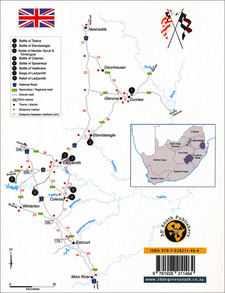
Overview map of hte battle of Modder Spruit and Tchrengula on 30 October 1899.
Described by military expert Steve Watt and fought on 30 October 1899, the Battle of Modder Spruit and Tchrengula, was the last before the commencement of the Siege of Ladysmith. Due to military blunders the battle resulted in the defeat of British arms.
Prelude
On 11 October 1899 the Boers having assembled at Sand Spruit were addressed by Cmdt-Gen Piet Joubert on the forthcoming invasion into Natal via the Drakensberg passes. For more than a week the Boers, assembled on the frontiers of the two republics, had been impatiently waiting for the signal to advance. The news of an ultimatum addressed to the British government on 9 October 1899, was received with great satisfaction by the Boers. At 17:00 on the afternoon of 11 October 1899 war began, but it was not until the early hours of the 12th that the Boers started to move. The Transvaal Boers invaded on three fronts. The right flank under Gen J Kock and 1 200 men entered Natal via Botha's Pass, on the left Gen D Erasmus with 2 000 men crossed the Buffalo River at Wool's Drift while in the centre Lt-Col SPE Trichardt with 3 000 men with two 155 mm Long Tom guns and six 75 mm field guns came through Laing's Nek. Further east Gen Lukas Meyer with 2 130 men with four 75 mm guns and four Maxims advanced to Doingberg (Doornberg) near Vryheid. Later Meyer would be augmented with a detachment from Erasmus' force. The first clash occurred at De Jager's Drift on 14 October when an element of Meyer's men captured five members of the Natal Police. Meanwhile the Free State Boers, totalling 2 200 men entered, Natal via the passes of Oliviershoek, Bezuidenhout, Van Reenen and De Beers. Their invasion went unopposed until a clash on 18 October with Natal Carbineers at Besters station resulting in one Boer fatality. The main disposition of the British forces consisted of 4 150 men with 18 guns at Dundee under Maj-Gen Sir Penn Symons, while 9 560 men with 30 guns, under the overall command of Sir George White, occupied Ladysmith. Along the line of communications to the south were small garrisons of troops at strategic points stationed between Ladysmith and Pietermaritzburg. On 17 October the Boers resolved to attack the British camp at Dundee. Although the British claimed the battle of Talana as a victory they evacuated Dundee leaving behind the wounded. With little rest and fearful of being caught by the Boers, they retired via Van Tonder's Pass towards Ladysmith. The Boers then proceeded to occupy the town. General Kock with 800 men which included a German and Dutch corps passed through the Biggarsberg on 19 October 1899 and occupied Elandslaagte railway station. They captured a supply train steaming through the station to Dundee. In order to keep the railway open, the British commander in Ladysmith Lt-Gen Sir George White despatched Maj JDP French with a mixed force of infantry, cavalry and artillery to Elandslaagte. The day after the battle of Talana another was fought at Elandslaagte (20 October 1899) which resulted in a victory for the British with the Boers having been driven off the battlefield. At the request of President M.T. Steyn of the Free State, all the Free Staters, then under the command of General A.P. Cronje, were ordered to advance in the direction of Elandslaagte. The arrival of six Free State commandos on the heights to the north of Ladysmith increased General Sir George White's anxiety for the safety of the British column retreating from Dundee. White despatched a mixed force of infantry, artillery, cavalry totalling 5300 men. The clash came on 24 October 1899 near Rietfontein farmstead. [...]
This is an excerpt from The Battle of Modder Spruit and Tchrengula 30 October 1899, by Steve Watt.
Title: The Battle of Modder Spruit and Tchrengula 30 October 1899
Author: Steve Watt
Series: The Anglo-Boer War Battle Series
Publisher: 30 Degrees South Publishers (Pty) Ltd.
2nd edition. Johannesburg, South Africa 2014
ISBN 9781928211488 / ISBN 978-1-928211-48-8
Softcover, 15 x 21 cm, 48 pages, 25 b/w photos and maps
Watt, Steve im Namibiana-Buchangebot
The Siege Of Ladysmith
This volume of the Anglo-Boer War Battle Series introduces to the The Siege Of Ladysmith that lasted from 2 November 1899 until 28 February 1900.
A Guide to the Anglo-Boer War Sites of KwaZulu-Natal
This guide leads to the majority of the Anglo-Boer War sites scattered throughout KwaZulu-Natal.
The Battle of Vaalkrans: 5–7 February 1900
The Battle of Vaalkrans on 5 th to 7th February 1900 is part of The Battles of the Anglo-Boer War Series.
The Battle of Modder Spruit and Tchrengula
The Battle of Modder Spruit and Tchrengula on 30 October 1899 resulted in the defeat of British arms.

